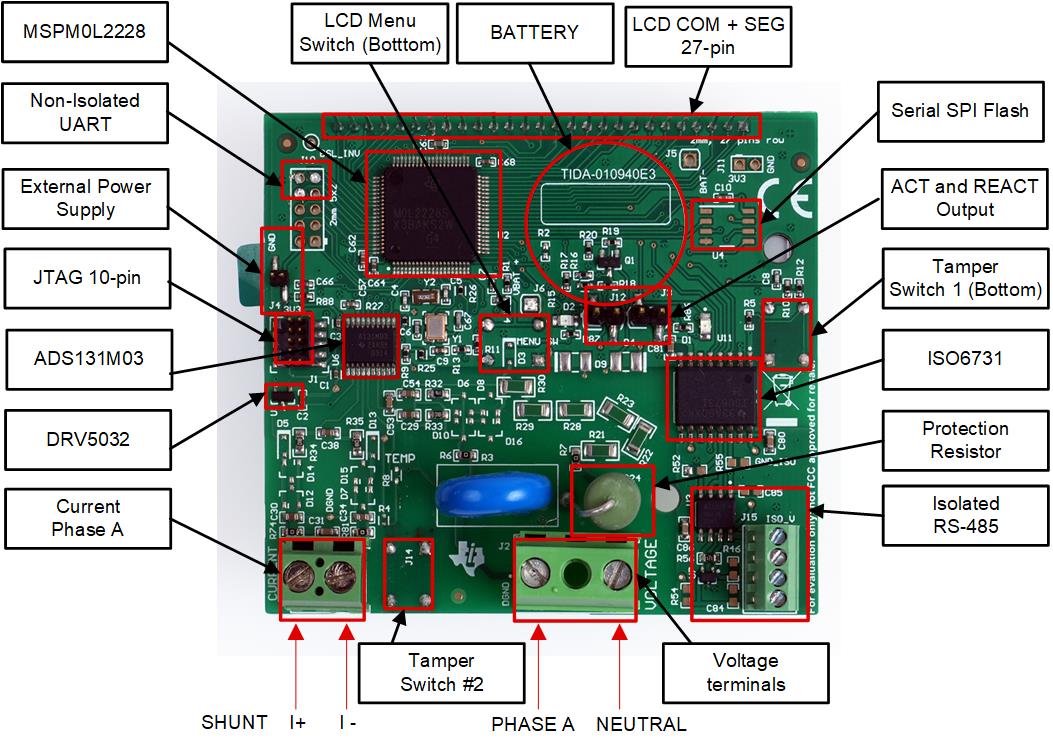TIDUF98 October 2024
- 1
- Description
- Resources
- Features
- Applications
- 6
- 1System Description
- 2System Overview
- 3Design Files
- 4Related Documentation
- 5About the Authors
2.4.1.2 Hardware
Figure 2-6 shows the location of various components of the reference design on the top layer of the PCB. The bottom layer (not shown) accommodates the LCD display with the Menu switch and two mechanical tamper switches to detect a case opening event.
 Figure 2-6 Top Layer
of TIDA-010940 PCB With Components Highlighted
Figure 2-6 Top Layer
of TIDA-010940 PCB With Components Highlighted